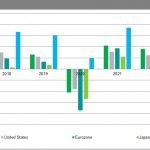
The COVID-19 pandemic is a serious crisis. To understand its effects, and to guide policy responses, we need evidence. However, since the crisis is recent, we do not yet have enough data to understand its long-term effects; since some policy responses have not yet been tried, or have only recently been implemented, we are unable to assess their success. Moreover, particularly given the seriousness of the pandemic, we need to ensure that evidence is of the highest quality, but the peer review process in finance journals takes several years.
The Review of Finance has prepared a virtual special issue highlighting published papers on past crises and economic downturns. While no two crises are the same, and the findings on prior downturns will not automatically apply to COVID-19, these papers will hopefully shed useful light on the current crisis. First, they are peer-reviewed; second, sufficient time elapsed after the downturns or policy responses to allow analyses of their long-term effects. A short summary of each paper and its potential relevance to the current crisis follows below.
All articles are freely available to read and download.
Effect of Crises on Job Losses
A major question in COVID-19 is whether it will lead to massive job losses. Kim, Maug, and Schneider (2018) find that workers on boards reduce job losses in industry downturns – but only for white-collar workers and skilled blue-collar workers. This is because worker directors are likely to be elected from these groups, and not from the group of unskilled blue-collar workers.
Read the Managing Editor’s blog on this paper.
Policy Responses
The European Central Bank is launching a €750 billion bond buying programme to address the pandemic. Krishnamurthy, Nagel, and Vissing-Jorgensen (2018) study three bond purchase programmes implemented by the ECB in 2010-12 during the Eurozone crisis, and analyse how they affected government bond yields and the real economy.
Read the Managing Editor’s blog on this paper.
National governments bailed out banks during the global financial crisis and subsequent European crisis. Fratzscher and Rieth (2019) find that, in conjunction with bond buying, bank bailouts reduced both bank credit risk and sovereign credit risk. Addressing both risks is key since they reinforce each other. They also spill over from core to peripheral European countries – and, surprisingly, from the periphery to the core – highlighting the importance of co-ordinated action.
Mitigating Financial Shocks to Firms
Can banks help firms in a time of crisis, by showing forbearance rather than liquidating them? Berger, Cerqueiro, and Penas (2015) find that, in normal times, small banks are particularly valuable to small firms, potentially due to personal relationships. Their presence leads to small firms borrowing more and failing less. However, these benefits disappeared during the financial crisis, potentially because small banks are less diversified and benefit less from government guarantees than large banks.
Schäfer (2019) studies firms with loans from both relationship and transactional banks. A firm is more likely to become temporarily delinquent on its loan to the relationship bank than one to a transactional bank, suggesting that relationship banks are more tolerant of temporary delinquencies. This forbearance is warranted – relationship banks do not suffer higher defaults or lower recovery rates when loans mature.
Read the Digest on this paper.
Many firms have suffered already credit rating downgrades, and further downgrades will soon follow. Chava, Ganduri, and Ornthanalai (2019) show that firms with traded credit default swaps (CDSs) suffer less from credit rating downgrades – their stock price falls by less, their cost of debt rises by less, and their ability to raise debt is less affected. This is because banks can continue to lend to downgraded firms and buy CDS as protection.
Read the Managing Editor’s blog on this paper.
Santioni, Schiantarelli, and Strahan (2019) show that firms affiliated with business groups withstood the global financial crisis and subsequent Eurozone crisis better than unaffiliated firms. Group members that were hit more by the shock received internal cash transfers from group members that were hit less.
Campello, Giambona, Graham, and Harvey (2012) show that credit lines played a significant role in mitigating the effects of the financial crisis, particularly for small firms with few cash holdings. Surprisingly, credit lines did not dry up, and provided the liquidity companies needed to continue to invest during the crisis.
How Investors Price Default Risk
Investors can insure against default through credit default swaps. However, Berndt, Douglas, Duffie, and Ferguson (2018) show that the cost of buying credit insurance is typically higher than the actual expected losses from default, and this difference varies over time by more than a factor of 10. While expected losses rise in financial crises, the cost of insuring against losses rises substantially more.
Read the Managing Editor’s blog on this paper.
How do investors take default risk into account? Anginer and Yıldızhan (2018) constructs a measure of distress risk which takes into account the fact that defaults are correlated – for example, many firms will default during a crisis. Firms with a higher risk of correlated default require higher equity returns.
[“source=academic.oup”]




